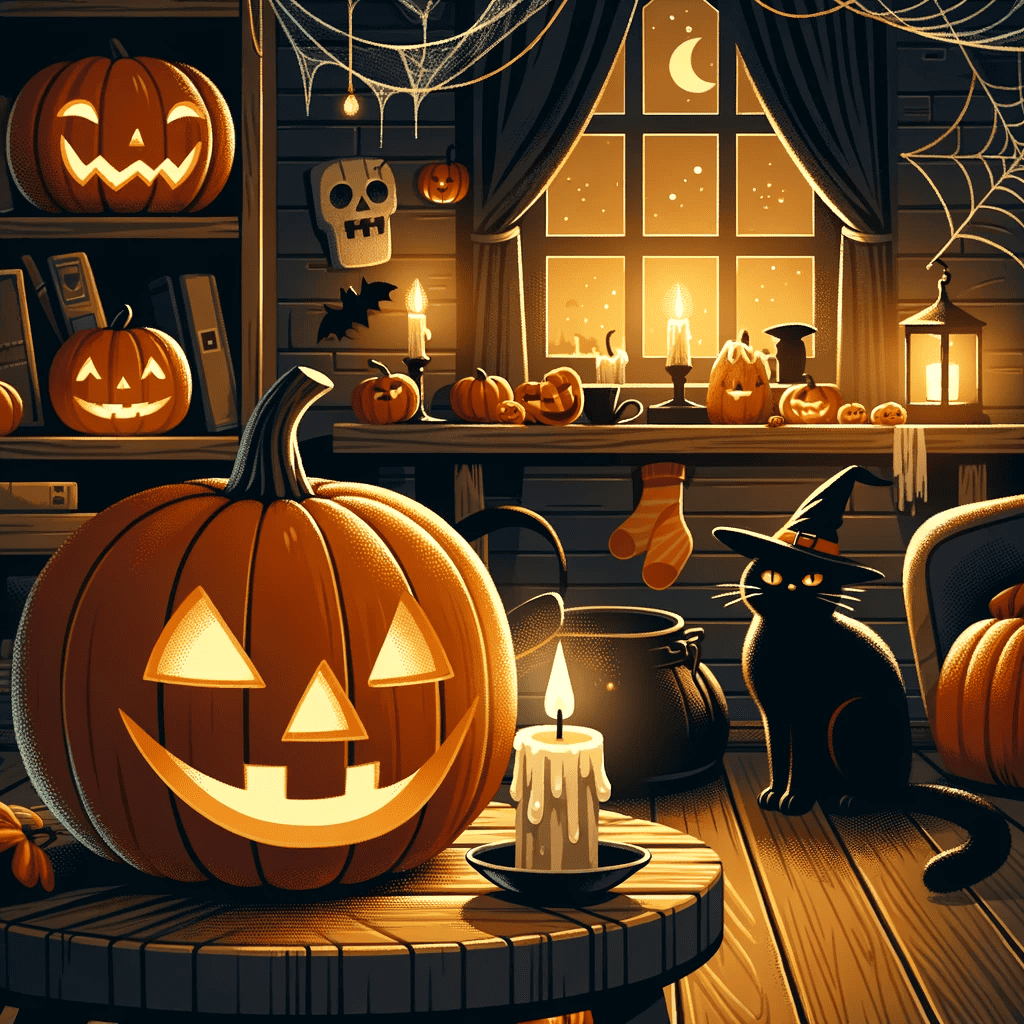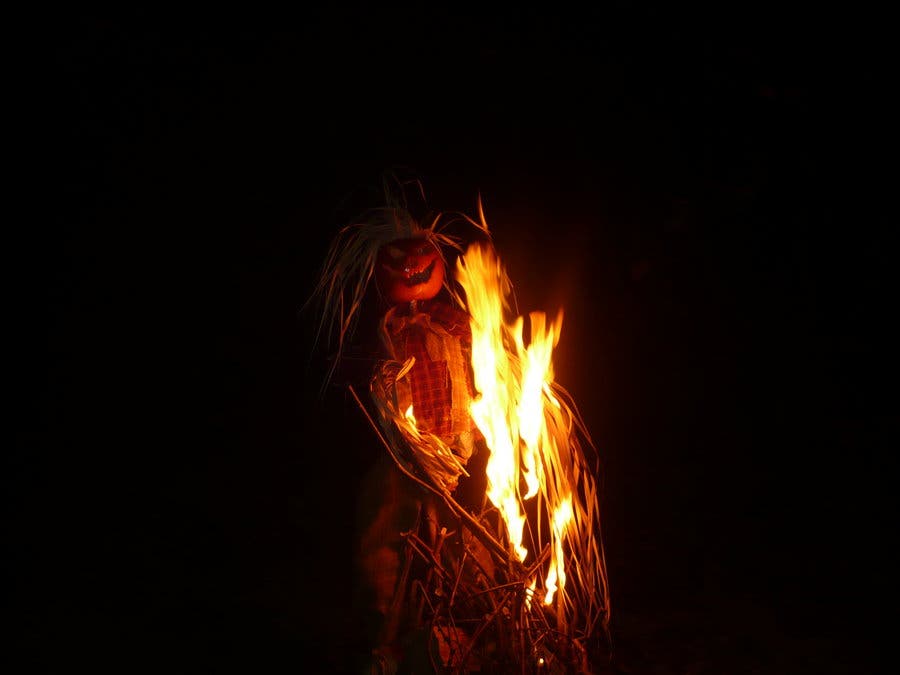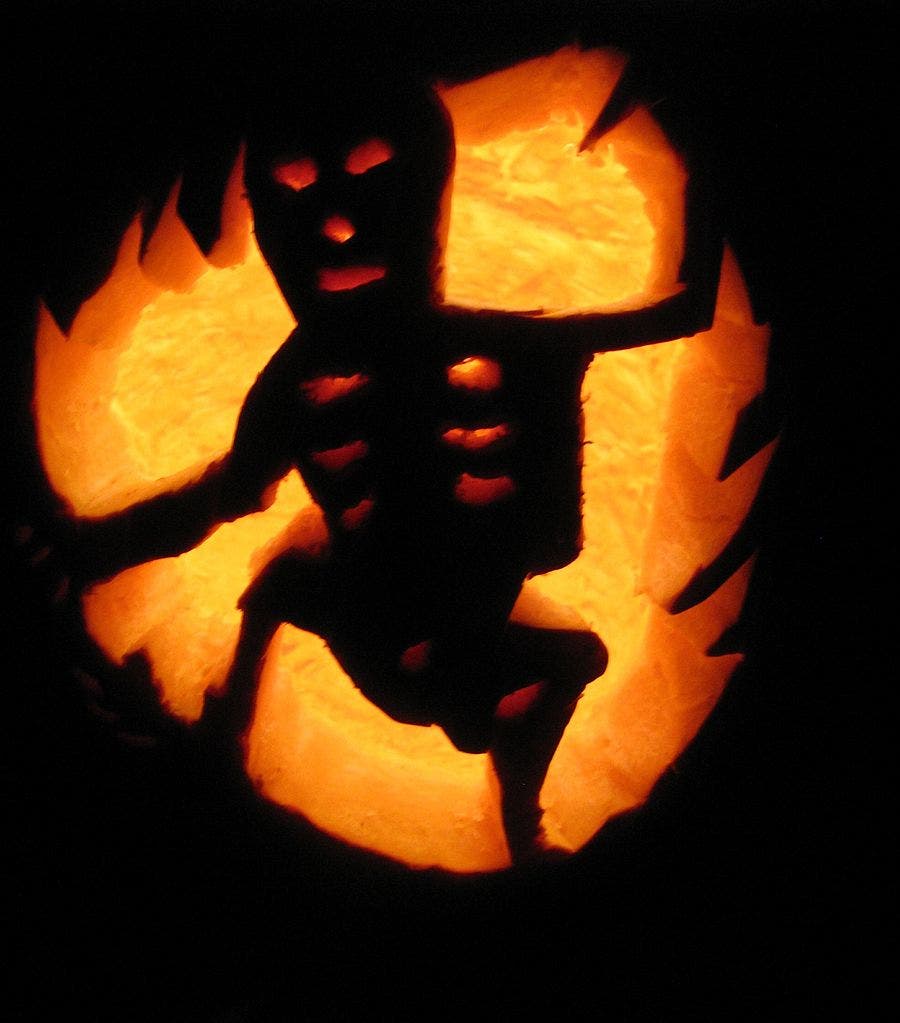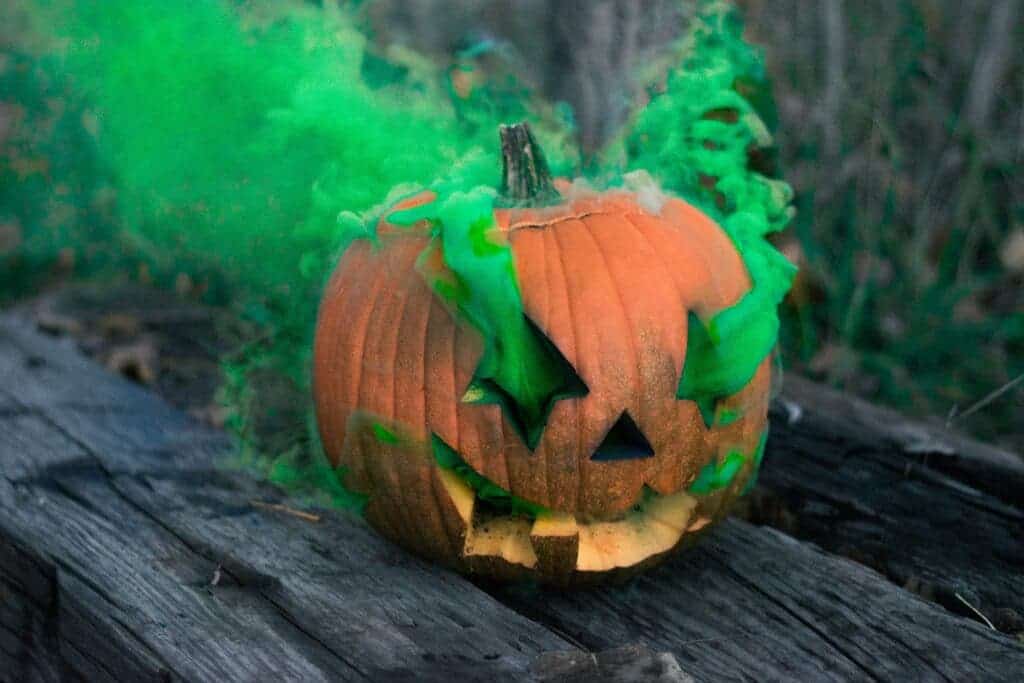
Every fall, millions and millions of pumpkins are carved into scary shapes and lit up from the inside, becoming the infamous mascots of Halloween. But why do we even do that? Let’s take a look at why we carve pumpkins for Halloween and why this is so popular.
The short story goes something like this.
The tradition of carving pumpkins for Halloween has its origins in ancient Celtic festivals, specifically the festival of Samhain. To ward off these wandering spirits and protect themselves, people would light bonfires and wear costumes. They also carved faces into vegetables, like turnips.
When Irish and Scottish immigrants came to America, they brought this tradition with them. However, they found that pumpkins, native to the Americas, were larger and easier to carve than turnips. This led to the shift from carving turnips to carving pumpkins.
But the longer story is much more interesting.
The Origins of Halloween
Hallowe’en is one of the most popular holidays in the world, at least in some countries. The holiday first began as a Celtic celebration called Samhain.
Samhain is the Celtic New Year. Celebrated from October 31st to November 1st, Samhain marked the end of the harvest season and the beginning of winter, which was often associated with starvation and danger. For the Celts, it represented a transitional period when the boundary between the living world and the world of the dead became porous.
The Celts believed that on the night of Samhain, the spirits of the dead returned to Earth. This had both a positive and negative side. Ancestors were honored and invited into homes, but harmful spirits were also believed to roam. To appease and ward off these spirits, the Celts lit large bonfires, wore costumes made of animal skins, and made offerings.
When the Romans conquered Celtic territories, they merged some of their own festivals with Samhain. The same thing happened when Christianity took over — they started to incorporate pagan festivals into Christian myths.
So actually, the origins of Halloween are actually connected to pagan beliefs and don’t originate in Christian rituals, as many believe. Truth be told today it’s kind of a hybrid celebration, incorporating both Celtic and Christian traditions, as well as modern traditions.
From Samhain to carving pumpkins
When the Christians expanded to Western Europe, they came across these Gaelic populations and wanted to convert them. However, they realized that if they tried to simply replace their celebrations, it’d be really difficult to convert them. So Christians went for a different strategy, and allowed the populations to keep their celebrations, but gave them a Christian flavor. The pagan harvest fest was blended in with the three-day observance of Allhallowtide, the time in the liturgical year dedicated to remembering the dead, including saints (hallows), martyrs, and all the faithful departed believers.
The Christian celebration that incorporated Samhain became known “All Hallows’ Eve”, which already starts to give an indication about its origin. All Hallows’ Eve is a Christianized feast influenced by Celtic harvest festivals.
Some pagan celebrations still persisted.
The preferred foods, for instance, did not change that much. Originally, no meat was eaten for All Hallows’ Eve, but today, abstinence from meat is not generally required, although eating certain vegetarian foods for this vigil day is still common. especially apples, colcannon, cider, potato pancakes, and soul cakes.
Another celebration that withstood the test of time was the carving of… turnips. That’s right, initially didn’t carve pumpkins, they carved turnips.
The Strange Legend Behind Carving Pumpkins
Carved pumpkins (or in some cases, turnips), are also called Jack O’Lanterns. We don’t know for sure how this practice started out, but it seems to come from an old Irish legend, the legend of Stingy Jack.
Carving vegetables has been a common practice in many parts of the world. Gourds are among the earliest domesticated plants, and may have been carved as early as 10,000 years ago. Gourds were used to carve lanterns by the Maori over 700 years ago, and the Maori word for a gourd is actually used to describe a lampshade. However, today’s Halloween carvings likely occur from the British and Irish regions.
According to the legend, a drunkard called Stingy Jack once asked the Devil to have a drink with him. This is already a weird start, but it gets even weirder.
True to his name, Stingy Jack didn’t then want to pay for his drink, which shows just how much nerve he had. He convinced the Devil to turn into a coin so that he could pay for the drinks. But when the Devil did turn into a coin, Jack decided to keep the money in his pocket, next to a silver cross — which prevented the Devil from turning back to his original shape. Jack eventually freed the Devil, under the condition that he would not bother Jack for one year and leave his soul alone.
Still, it gets even stranger.
Jack met up with the Devil at some later point. Somehow, Jack managed to convince the devil to climb up a tree to pick up some fruit. He then sculpted a cross on the tree’s bark to prevent him from getting down, forcing a promise that he would be left alone for ten more years and that his soul would not be claimed. Why didn’t he just ask him to be left alone for good, I don’t know. Jack was a strange guy.
But not long after that, Jack’s soul passed away. God didn’t really want the likes of Jack in Heaven, so he sent him to hell. But the Devil didn’t want him either. He was still upset by Jack’s tricks and he had to keep his word and not claim his soul. So instead, he sent Jack off into the dark night with only a burning coal to light his way.
Jack placed the ember inside a hollowed-out turnip, creating a makeshift lantern. This became his signature emblem as he roamed the Earth. Over time, he became known as “Jack of the Lantern,” which was eventually shortened to “Jack-O’-Lantern.” There are other similar (or different stories), but in all the stories, there’s someone who makes a deal with the Devil to have his soul free and ends up wandering with a coal inside a turnip.
People thought that by making their own lanterns to scare Jack off (or the Devil). In Ireland and Scotland, they used turnips or potatoes and placed them by the window. In England, large beets were used. The British and Irish that moved to the US took this tradition with them. They soon discovered that the pumpkin, a species native to America, works perfectly for that, so they used pumpkins instead.
From carving turnips to carving pumpkins
That still doesn’t really explain why we carve pumpkins. To get to that, we need to look at a more earthly phenomenon: migration.
In the British Isles, carving turnips and other vegetables remained popular throughout the centuries.
In the 19th century, many Irish and Scottish individuals and families immigrated to the United States, fleeing economic hardships, famines (notably the Irish Potato Famine), and seeking better opportunities. With them, they brought various customs and traditions, including the practice of carving lanterns for the Samhain festival.

When Irish and Scottish immigrants arrived in America, they discovered pumpkins, which were native to the region. Pumpkins were larger and easier to carve than turnips, making them the preferred choice for the Jack-O’-Lantern tradition. Compared to turnips, pumpkins offered several advantages for carving:
- Size: Pumpkins are generally larger, providing a broader canvas for more intricate designs.
- Texture: The flesh of the pumpkin is softer and easier to carve than the denser turnip.
- Durability: Once carved, pumpkins tend to retain their shape and resist decay for a more extended period.
- Visibility: Their size and the color contrast between the outer skin and inner flesh make illuminated pumpkins more noticeable in the dark.
As these immigrants assimilated into American society, the tradition of carving pumpkins became more widespread. Over time, it evolved from a protective ritual to a communal and artistic activity. Communities began organizing pumpkin carving contests, and the practice became an integral part of American Halloween celebrations.
Today’s Pumpkins
Today, carving pumpkins is as much an industry as it is a tradition. Farmers grow 1.5 billion pounds (680,000,000 kilograms or 680,000 tonnes) of pumpkins each year. Interestingly, there’s a “pumpkin pole” in the US. Around 90% of US pumpkins are raised within a 90-mile radius of Peoria, Illinois. Even more interestingly, most pumpkins are processed into canned pumpkin puree and canned pie mix — so they’re not for carving.
There are pumpkin carving competitions. In these competitions, the traditional scary faces are often replaced by other creative designs. The world’s largest jack-o’-lantern was carved from the then-world’s largest pumpkin on October 31, 2005, in Northern Cambria, Pennsylvania; it weighed 1,469 lb (666.33 kg) on October 1, 2005.
But without a doubt, carving pumpkins is for everyone. If you’re looking for a creative way to spook your friends and family this Halloween, or just signal to kids that you’re welcoming trick or treating, carving a pumpkin is definitely the way to go. There are many different ways to carve a pumpkin, but the most common methods involve using a solid knife to cut the top (or the bottom) of the pumpkin. You can use a mixer or a spoon to take out the inside, and then with an erasable marker, draw the outline of the pumpkin.
There are a million designs you can find online, and studies have shown that carving pumpkins can be a useful creative exercise. If you’re new to carving pumpkins, don’t fret — just stick to something simple.
Then, if you want the pumpkin to last longer, apply Vaseline to the edges, and finally, place a candle inside for lighting. You can use the insides (without the seeds) for baking or even for mixing into drinks (how ’bout an authentic pumpkin spice latte?) — you can even freeze the pumpkin insides for later use, to avoid food waste.
Also, be careful! Studies show that in the US, there are around 2,000 serious hand injuries, mostly cuts to the thumb. So pick some safe tools before you get started and as always, don’t take any risks.
So, prepare your pumpkins and your carving knife, because we couldn’t really imagine Halloween without pumpkins, could we? It’s not about making the best ones, it’s about enjoying a century-old tradition — and keeping Jack o’lantern away.
Carving Pumpkins FAQ
A: The tradition of carving pumpkins has its roots in the ancient Celtic festival of Samhain. Originally, the Celts carved turnips and placed them outside their homes to ward off evil spirits during Samhain. The carved vegetable lanterns were thought to either repel the spirits or represent them.
A: Irish and Scottish immigrants brought the tradition of carving lanterns to America. Upon their arrival, they discovered that pumpkins, native to the Americas, were larger and easier to carve than turnips, leading to the shift from turnips to pumpkins.
A: Today, the carved pumpkin, or jack-o’-lantern, is primarily a symbol of Halloween celebrations. It’s a blend of art, tradition, and festivity. For many, it’s a fun activity that allows for creativity and is an essential part of Halloween decor.
A: It’s generally not recommended to eat pumpkins that have been carved and left out for extended periods. They can attract bacteria and mold. However, pumpkins that haven’t been carved or have been kept refrigerated can be consumed. You can also eat the filling you take out when you carve it (if the pumpkin is edible).
A: To extend the life of your carved pumpkin, keep it in a cool place away from direct sunlight. Some people also apply petroleum jelly to the cut edges to prevent drying out. Spraying a mixture of bleach and water can also help prevent mold growth.
A: While there’s no single “correct” way to carve a pumpkin, many start by cutting a lid at the top, scooping out the seeds and pulp, and then carving a design on the front. Always exercise caution and use appropriate tools.
A: Yes! Before pumpkins became popular, people carved turnips, beets, and potatoes. You can get creative and try carving other large fruits and vegetables like watermelons or pineapples.





